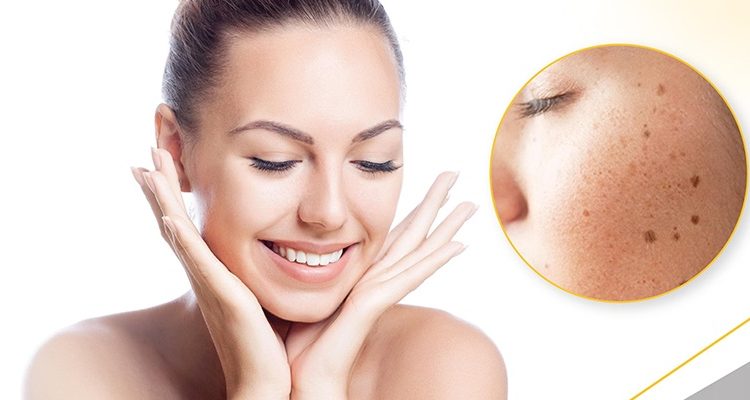Brown, dark patches on the skin called post-inflammatory hyperpigmentation (PIH) result from inflamed skin lesions like pimple spots or acne.
Surgical scars, eczema, and skin irritation from scratching are among other reasons for post-inflammatory hyperpigmentation.
PIH results from changes in normal pigmentation brought on by inflammation in the skin, including that brought on by dermatitis, acne, insect bites, and other conditions. Because of melanin overproduction (the skin’s natural color), which occurs as part of the healing process, lesions can result in hyperpigmentation.
Based on what created the mark and the area it’s on, the way it looks might vary. Normally, the pigmentation is darker compared to the skin’s natural tone. A deeper tint of blue, brown, or even gray might result from it. They often appear as flat, dark brown, or black patches on the skin. Due to the damage or skin inflammation, there’s an increase in melanin pigment production.
Hyperpigmentation might be spherical or spotty and occurs in various proportions. The distinction between post-inflammatory pigmentation and your natural skin tone stays constant.
Who Has A Higher Risk Of Developing Post-Inflammatory Hyperpigmentation?
Individuals with darker skin tones are more likely to develop PIH. This is due to a greater propensity for melanin pigment production in those with darker skin tones.
Pigmentation removal is more challenging to cure PIH when it’s deeper in the skin and darker in color. Post-acne markings or pigmentation are the most prevalent kind of persistent PIH.
PIH may affect both men and women equally. Every kind of skin is affected. These show up as pigmented, flat patches on the face or body that might be brown, pink, black, or red in appearance.
Causes of Hyperpigmentation
Increased or excessive synthesis of melanin, the natural pigment of the skin, is the main contributing factor to PIH. Many things, including hormonal fluctuations and the way the skin recovers from inflammation, cause melanin to be produced.
Any kind of damage, including acne and rashes, may inflame the skin. The melanocytes’ increased production of melanin is brought on by inflammation. Skin areas that have an overabundance of pigment become discolored and darkened. The discoloration might be more noticeable if the inflammation is more acute. Acne popping or picking causes more inflammation, which raises the risk of developing PIH.
Treatments For PIH That Are Offered In Singapore
Post-inflammatory hyperpigmentation, particularly those left behind by severe forms of acne, hyperpigmentation is tenacious and hard to remove. These are lesions due to inflammations and markings brought on by blood capillary breaks. The excessive melanin synthesis in the affected region is the cause of the pigmentation issue.
You’re not alone if you’re experiencing hyperpigmentation due to acne. For information on over-the-counter remedies or medical interventions, it is better to speak with your doctor or dermatologist. Below are the pigmentation removal procedures that are available in Singapore to address PIH or acne:
Chemical Peels
Glycolic acid or salicylic acid is often used in this therapy. In order to show lighter, healthier skin, this helps rejuvenate the top skin layers. It works well for cell turnover and enhancing skin appearance.
Chemical peels come in three main varieties: deep, medium, and superficial. The epidermis, which is the skin’s outermost layer, is targeted by superficial peels. Freckles and age spots may also be effectively treated with medium-depth peels, although deep peels are more aggressive and could reach the skin deeply.
In order to expose healthy skin from beneath, this procedure reacts to the top skin layers and dissolves damaged or pigmented skin cells. Throughout the procedure, patients could feel a tingling feeling, but this would pass after the solution has already been neutralized. Because it penetrates the skin more deeply and is more aggressive, deeper peels might need some numbing cream.
Pico Laser
In order for the skin to readily absorb and remove pigmented regions, Pico Laser breaks down extra melanin. In comparison to conventional lasers, this treatment employs ultra-short 450 picosecond pulses, which implies the skin is subjected to less heat.
Pigments are broken up into tiny pieces due to the high power and very brief pulse duration utilized. This entails reduced treatment sessions since the method causes pigmentations to clear up more quickly than they would with other forms of therapy. With the mentioned procedures, Pico Laser functions 90 percent better and more effectively. To assist you in fully removing your specific pigmentation, you could need 4 to 6 sessions.
As with other treatments, Pico Laser has a few minor side effects, like some itching or a flushed pink appearance, but these symptoms usually subside within a couple of hours. Small warm pricks might be felt throughout the process, but most patients can handle it. You may resume working right away after a Pico Laser procedure, although it is best to avoid spending too much time in the sun to prevent hyperpigmentation.
















